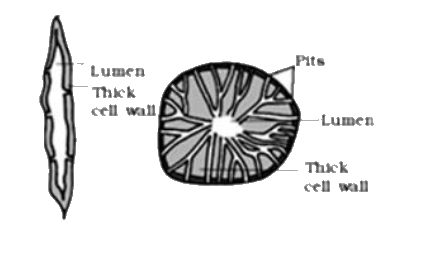All isogamy, anisogamy and oogamy are found in which of the following?
Spirogyra
Ulothrix
Oscillatoria
Chlamydomonas
The correct Answer is:D
To solve the question regarding which organisms exhibit isogamy, anisogamy, and oogamy, we can follow these steps:
1. Understanding the Terms:
- Isogamy: This is a type of sexual reproduction where the gametes are morphologically similar and usually of the same size. Both gametes are typically motile.
- Anisogamy: This involves the fusion of gametes that are morphologically dissimilar, usually differing in size. One gamete is typically larger and non-motile (female), while the other is smaller and motile (male).
- Oogamy: This is a specific form of anisogamy where the female gamete is large and non-motile (egg), and the male gamete is small and motile (sperm).
2. Analyzing the Options:
- Option A: Spirogyra: This organism reproduces via isogamy, as it involves the fusion of similar gametes. Therefore, it does not exhibit anisogamy or oogamy.
- Option B: Ulothrix: Similar to Spirogyra, Ulothrix reproduces by isogamy only, so it does not meet the criteria for anisogamy or oogamy.
- Option C: Oscillatoria: This is a cyanobacterium that primarily reproduces asexually through vegetative methods, hence it does not exhibit any of the three types of gametic fusion.
- Option D: Chlamydomonas: This green alga is capable of reproducing through all three methods: isogamy, anisogamy, and oogamy. It can produce similar gametes, dissimilar gametes, and also has a distinct male and female gamete.
3. Conclusion: Based on the analysis of the options, the correct answer is D: Chlamydomonas. This organism is unique in that it can reproduce through isogamy, anisogamy, and oogamy.
Final Answer:
D: Chlamydomonas
- Isogamy: This is a type of sexual reproduction where the gametes are morphologically similar and usually of the same size. Both gametes are typically motile.
- Anisogamy: This involves the fusion of gametes that are morphologically dissimilar, usually differing in size. One gamete is typically larger and non-motile (female), while the other is smaller and motile (male).
- Oogamy: This is a specific form of anisogamy where the female gamete is large and non-motile (egg), and the male gamete is small and motile (sperm).
- Option A: Spirogyra: This organism reproduces via isogamy, as it involves the fusion of similar gametes. Therefore, it does not exhibit anisogamy or oogamy.
- Option B: Ulothrix: Similar to Spirogyra, Ulothrix reproduces by isogamy only, so it does not meet the criteria for anisogamy or oogamy.
- Option C: Oscillatoria: This is a cyanobacterium that primarily reproduces asexually through vegetative methods, hence it does not exhibit any of the three types of gametic fusion.
- Option D: Chlamydomonas: This green alga is capable of reproducing through all three methods: isogamy, anisogamy, and oogamy. It can produce similar gametes, dissimilar gametes, and also has a distinct male and female gamete.
D: Chlamydomonas
Topper's Solved these Questions
- PLANT KINGDOM BOOK - VMC MODULES ENGLISHCHAPTER - PLANT KINGDOM EXERCISE - IN-CHAPTER EXERCISE-C
10 Videos
- PLANT KINGDOM BOOK - VMC MODULES ENGLISHCHAPTER - PLANT KINGDOM EXERCISE - IN-CHAPTER EXERCISE-D
10 Videos
- PLANT KINGDOM BOOK - VMC MODULES ENGLISHCHAPTER - PLANT KINGDOM EXERCISE - IN-CHAPTER EXERCISE-A
10 Videos
- ORGANISMS & POPULATIONS BOOK - VMC MODULES ENGLISHCHAPTER - ORGANISMS & POPULATIONS EXERCISE - In - Chapter exercise C
10 Videos
- PRINCIPLES OF INHERITANCE AND VARIATIOBOOK - VMC MODULES ENGLISHCHAPTER - PRINCIPLES OF INHERITANCE AND VARIATIOEXERCISE - IMPECCABLE
56 Videos
Similar Questions
Knowledge Check
In meiosis I at equator, which of the following is found?
AbivalentBunivalentsCchromatids separateDnone of these
Air bladder is found in which of the following fishes?
View SolutionSpiral shaped chloroplast is found in which of the following algae?
View SolutionLeghemoglobin is found in which one of the following organisms ?
View SolutionTracheids are found in all the following plants, except
View SolutionGiven type of plant cells are found in all of the following , except

View SolutionIn which of the following elaters are found ?
View SolutionNeutron can be found in all the atom
View Solution
